| Area |
Core principle |
Components |
| Data and evaluation |
The organisation systematically collects, analyses and uses data on needs, activity, outcomes and resource use, shares information with partner organisations, and draws on information provided by others. |
- The organisation has, or has plans to, implement electronic patient records
- The organisation has or has plans to work with partners to develop integrated information systems or linkage of electronic records
- The organisation collects accurate and complete data on need, activity, outcomes of care and resource use, and shares information with partner organisations where appropriate, for example to contribute to local population health needs analyses
- The organisation draws on information on health and health needs provided by other organisations such as the local public health team and PHE
- The organisation routinely analyses data on activity, need, outcomes and resource use and responds to the findings
|
| Effectiveness and appropriateness |
The organisation’s clinical strategies and activities are based on the best available evidence of clinical and cost effectiveness, including relevant recommendations from NICE. |
- The organisation delivers services which are based on evidence of clinical and cost-effectiveness, and can demonstrate this through clinical audit (including participation in relevant national audits), or other approaches
- The organisation ensures that patients receiving interventions are those who are most likely to benefit and can demonstrate this through clinical audit, monitoring of patient reported outcome measures (PROMs), or other approaches
- The organisation has a systematic approach to the review and timely implementation of NICE guidance
- The organisation bases the implementation of innovations and new technologies on assessments of clinical- and costeffectiveness and appropriateness, and evaluates their impact
- The organisation actively participates in well-designed and conducted research
|
| Quality and improvement (QI) |
The organisation has a culture of continuous quality improvement. |
- The organisation develops and implements a board-approved QI plan and assurance processes
- The organisation routinely monitors measures of quality and responds to the findings
- Staff are trained and supported to improve the quality of services they provide using evidence based QI techniques
|
| Safety |
The organisation can demonstrate that its services are as safe as possible and that safety concerns are responded to. |
- Staff are trained and supported to deliver safe services and to minimise risk to patients and to themselves and other staff
- Organisational culture encourages the reporting of safety concerns
- The organisation responds to safety concerns in a timely fashion
|
| Population health and collaboration |
The organisation operates as a provider of population healthcare, working with commissioners and other partners within an integrated care system to ensure that services respond to the needs of the population it serves. |
- The organisation bases its current and planned service provision on an understanding of the needs of the population it serves
- The organisation engages in a whole system process for prioritisation involving clinical and other staff, service users and partner organisations
- The organisation develops and implements pathways of care in partnership with other local health and care providers across an integrated system
- The organisation works collaboratively with other organisations to provide care for patients with complex needs
|
| Involving service users and staff |
Service users and their carers and staff are involved in service planning and redesign. |
- The organisation actively encourages and supports the involvement of service users and their carers in service planning, design and evaluation
- The organisation encourages and supports staff involvement in service planning and design
- The organisation supports staff to identify where improvements are needed and to develop, implement and evaluate changes
- Clinical leaders act as champions for value in healthcare
|
| Specialist expertise in population healthcare |
The organisation has an identified source of specialist expertise and advice on population healthcare. |
- There is at least one professional with appropriate specialist public health training and experience who provides the organisation with advice and where necessary leadership on population health
- The professional is either directly employed by the organisation or has a defined responsibility to work with the organisation while employed by another organisation such as Public Health England (PHE) or the local authority
|
